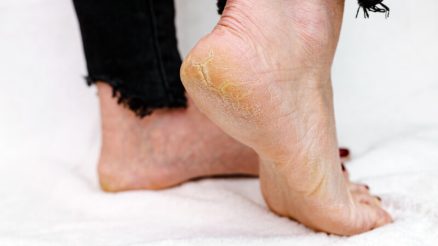As we age, our bodies undergo many changes, and our toenails are no exception. They can become thicker, more brittle, discolored, and more prone to fungal infections or ingrown nails. While these changes are a natural part of aging, neglecting proper toenail care can lead to discomfort, pain, and even more serious health issues.
The good news is that with a consistent daily care routine, you can maintain healthy, happy toenails and keep potential problems at bay. Here’s a comprehensive guide to daily care for aging toenails:
1. Gentle Cleaning and Trimming
Regular cleaning and proper trimming are fundamental to healthy toenails.
- Soak Your Feet: Before trimming, soak your feet in warm water for 10-15 minutes. This will soften the nails, making them easier to cut and reducing the risk of splitting or cracking. You can add a mild soap or Epsom salts to the water for an extra soothing effect.
- Clean Underneath: While soaking or after, use a soft nail brush or a clean washcloth to gently clean under and around your toenails. Be careful not to dig too deep, as this can create tiny cuts where bacteria can enter.
- Trim Straight Across: Always trim your toenails straight across, not in a curve like fingernails. Cutting them too short or rounding the corners can encourage ingrown toenails. Leave a small amount of white tip.
- Use Proper Tools: Invest in good quality, sharp nail clippers or nail nippers designed for thicker nails. Dull tools can make trimming difficult and lead to jagged edges. Disinfect your tools with rubbing alcohol before and after each use.
- File Gently: After trimming, use a fine-grit nail file to gently smooth any sharp edges or corners. File in one direction to prevent splintering.
2. Regular Moisturizing
Dryness can make toenails brittle and prone to breakage. Moisturizing is key.
- Hydrate Nails and Cuticles: After bathing or soaking your feet, apply a rich foot cream or a specific cuticle oil to your toenails and the surrounding skin. This helps keep them supple and prevents them from drying out and becoming brittle.
- Focus on Cuticles: Healthy cuticles are important for healthy nail growth. Gently massage the moisturizer into your cuticles.
- Avoid Harsh Products: Steer clear of harsh nail polishes, removers containing acetone, or strong chemicals that can strip natural oils from your nails.
3. Choose Appropriate Footwear and Socks
What you wear on your feet significantly impacts toenail health.
- Comfortable, Well-Fitting Shoes: Wear shoes that provide ample room in the toe box, allowing your toes to wiggle freely. Shoes that are too tight can put pressure on your nails, leading to ingrown nails, bruising, or fungal infections.
- Breathable Materials: Opt for shoes made from breathable materials like leather or mesh to help prevent moisture buildup, which can foster fungal growth.
- Moisture-Wicking Socks: Choose socks made from materials like cotton or synthetic blends that wick away moisture. Change your socks daily, or more often if your feet sweat excessively. This helps keep your feet dry and reduces the risk of fungal infections.
4. Daily Inspection for Changes
Make it a habit to check your toenails regularly – ideally daily or every few days.
- Look for Discoloration: Note any changes in color (yellow, brown, black, white). This could indicate a fungal infection, trauma, or other underlying issues.
- Check for Thickening or Brittleness: Observe if your nails are becoming unusually thick, crumbly, or brittle.
- Examine for Redness or Swelling: Look for signs of inflammation around the nail, which could suggest an ingrown nail or infection.
- Monitor for Pain or Tenderness: Any new pain or tenderness should be investigated.
- Be Aware of Odor: An unusual odor can be a sign of a bacterial or fungal infection.
5. When to Seek Professional Help
While daily care is crucial, some issues require a professional touch.
- Persistent Discoloration or Thickening: If you notice significant changes in nail color or thickness that don’t improve with home care, consult a podiatrist. These could be signs of fungal infections, which require medical treatment.
- Ingrown Toenails: If an ingrown toenail becomes painful, red, swollen, or shows signs of pus, do not attempt to fix it yourself. A podiatrist can safely remove it and prevent further complications.
- Recurring Infections: If you experience frequent nail infections, a professional can help identify the cause and recommend preventive strategies.
- Diabetes or Circulatory Issues: If you have diabetes, peripheral artery disease, or other conditions affecting circulation, foot and toenail care becomes even more critical. Even minor foot problems can escalate quickly. Consult your doctor or podiatrist for regular foot checks and guidance.
- Difficulty with Self-Care: If you have difficulty reaching your feet, poor eyesight, or issues with dexterity, do not hesitate to seek help from a family member, caregiver, or a professional podiatrist for your nail care.
Conclusion
Caring for aging toenails is an essential part of overall foot health and well-being. By incorporating these simple yet effective daily practices into your routine – regular cleaning and trimming, moisturizing, wearing proper footwear, and vigilant inspection – you can keep your toenails healthy and prevent common problems. Remember, your feet carry you through life, so give them the consistent care and attention they deserve!








